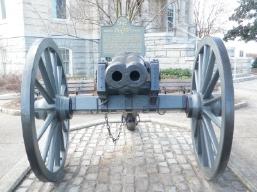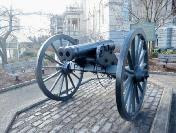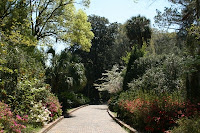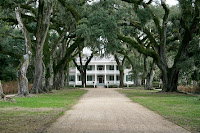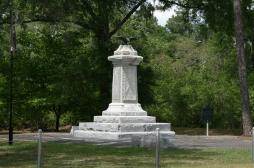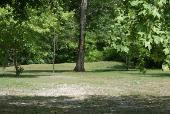 |
| Heavener Runestone |
Note: The park remains open thanks to the city of Heavener stepping up to save it. It is now operated as a municipal park and is open daily, so stop by and visit when you can!
The Oklahoma Tourism and Recreation Department has announced plans to PERMANENTLY close seven state parks, including Heavener Runestone State Park.
The announcement from the department indicates that the closures will take effect on August 15th and result from budget cutting plans. Other parks slated for closure are Adair State Park in Stilwell; Beaver Dunes in Beaver; Boggy Depot in Atoka; Brushy Lake in Sallisaw Lake Eucha in Jay; and Wah-Sha-She in Copan. The measure will eliminate only 10 full-time positions and save the department around $700,000, but the economic impact on the communities affected could be tremendous.
 |
| Waterfall near the Runestone |
Heavener Runestone State Park alone, for example, annually attracts around 100,000 people to eastern Oklahoma. The loss of this visitation will have a tremendous economic impact on Heavener and other local communities, reducing sales for merchants and tax collections for the state.
The park, which occupies a beautiful setting on the top of Poteau Mountain, takes its name from unique carvings found on a large boulder there. The characters have been identified as Norse runes, but there is debate over their age and authenticity. A solid core of believers think they provide evidence that Viking explorers came up the Mississippi and Arkansas Rivers hundreds of years ago and made their way as far as eastern Oklahoma. Others believe they are forged. Still others believe they are of more recent origin, but were not intended as a forgery but simply to add character to the ravine where the boulder was found.
Although there are some variations, most believe that the runes spell out either "Glomesdal" or "Gnomesdal." Roughly interpreted, this would mean either "Valley of Glome" or "Valley of the Gnomes." I tend to favor the latter interpretation, as the ravine is quite beautiful and brings to mind stories of mythical creatures like gnomes and fairies. Others believe that "Glome" could have been an early Norse explorer who settled in the region. Several other smaller runestones have been found around the area.
 |
| Heavener Runestone State Park |
I'll confess that the lack of other artifacts causes me some serious doubts about the ancient Vikings theory, but I have visited the state park many times and it is one of the most beautiful spots in all of Oklahoma. Located atop a mountain, it provides spectacular views of the surrounding countryside, beautiful and rugged hiking trails, mountaintop picnicking, spring waterfalls and more. They mystery surrounding the Heavener Runestone adds a great deal of charm to the setting, which is well worth being preserved as a cultural landmark, whatever the truth behind it.
The land for the park was donated to the state and would revert back to the heirs of the original owners if the park is closed, so the state would gain very little from closing this park, which is extremely popular with visitors from around the region who come to enjoy the setting, as well as tourists who come from far and wide to see the famed runestone.
You can read more about the park and see additional photos at
www.exploresouthernhistory.com/heavener1.
